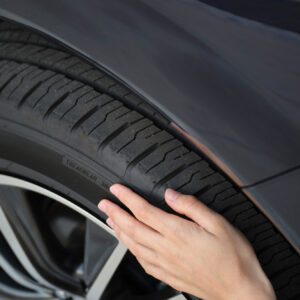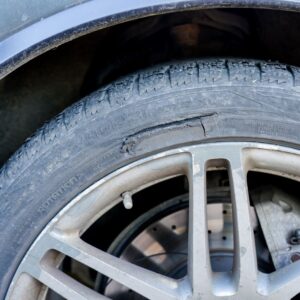The summer heat presents specific challenges that cause vehicles to break down. This year is going to be especially challenging, with the American Automotive Association (AAA) projecting that more than 71 million people will travel more than 50 miles for the 4th of July holiday. Extreme heat and standstill traffic is a recipe for disaster for any vehicle.
If you’re driving somewhere for the fourth of July or going out of town to enjoy the warm weather, you need to make sure your car is ready for the trip. You need to know some essential summer car care tips. Here are some parts and automotive systems you need to check and what you can do to prepare them for a summer road trip.
Tires
Asphalt absorbs heat and radiates it back into the environment. As tires travel on the hot asphalt and heat up, the rubber compound they’re made of can get softer and weaker. As the temperature rises, the pressure in your tires also increases, which can damage their structure and potentially cause them to blow out.
Check Tire Condition
One of the most important summer car tips is to check your tires. Low tire tread, dry rot, or sidewall cracks shouldn’t be ignored because they make driving your vehicle unsafe. You should replace any tire with these issues immediately before going on a long road trip.
Check Tire Pressure
Make sure that your tires are inflated to the recommended pressure, which you can usually find on a sticker in your driver’s side door jamb. When tires are underinflated, their sidewalls flex much more than usual, creating a lot of heat. This combined with the summer heat can stress tires to the point that they blow out. This can also happen when tires are overinflated. As the temperature rises, the pressure inside the tires also rises. This can cause the tire to expand and eventually burst.

Battery
Extreme heat can affect batteries, causing them to hold less charge and corrode faster.
Check Battery Voltage
The last thing you want is to get a flat battery and be unable to start your engine when you’re in an unfamiliar or remote location. If your battery has reached its intended lifespan, then you should consider replacing it before your long road trip. You can verify your battery’s condition using a multimeter to check its voltage. A fully-charged battery should show 12.7 volts or more. If the voltage drops to 11.9 volts, then it’s considered dead.
Engine Oil and Coolant
Your vehicle’s cooling system is less effective in the summer since ambient air temperatures are hotter. While both oil and coolant play a role in cooling your engine, most heat is absorbed by the coolant and radiated to the surrounding cool air through the radiator.
Check For Leaks and Refill Coolant Levels
If your vehicle’s cooling system is leaking coolant or has low coolant levels, then it is at greater risk of overheating during the summer. Ensure that your engine has the appropriate amount of coolant. If not, then you should refill your coolant and check for leaks in your cooling system.
Any existing leaks will eventually deprive your engine of coolant, which will cause it to overheat. Overheating is a serious issue that can cause significant engine damage.
Check Oil Levels
Checking oil levels should be a part of your vehicle maintenance routine. However, conducting a check before a long drive is good as an additional precaution. Engine oil is vital, and having insufficient oil is going to cause your engine to wear out at an extraordinary rate, overheat, and eventually break down.
Brakes
Brakes are designed to handle high temperatures, but they should still be inspected before long road trips.
Check Brake Fluid
The brake master cylinder reservoir should have a sufficient amount of brake fluid. Low brake fluid levels mean there could be a leak in the system. If this is the case, you should have a mechanic inspect your brakes for leaks.
Check Brake Pads
You can peek through your wheel and check the brake pads in between the calipers. If there’s less than a quarter of an inch of brake pad material left, then it’s time to replace your brake pads.
Serpentine Belt
Serpentine belts get stretched over time, which causes them to lose tension. When this happens, the belt can slide around the pulley and create squeaking noises. The heat from the engine can also dry out and crack the belt after several years. The summer heat can exacerbate any issues the belt might already have, such as misalignment or incorrect tension, which can cause it to deteriorate faster and fail.
Check for Damage
Look for any signs of damage such as fraying, cracking, or glazing. Any defects on the belt can cause it to fail when it’s exposed to extreme temperatures.
Replacing an old and worn-out serpentine belt is important because a snapped serpentine belt can cause many important vehicle systems to shut down. These include your vehicle’s power steering, air-conditioning, and electrical system.
Air-Conditioning
The air-conditioning system can encounter problems and lose all its ability to cool the vehicle’s cabin. If you’re planning on going on a long drive in summer, the last thing you want is to drive in hot weather for extended periods without your vehicle’s climate control.
Looking Out for Signs of A/C Issues
Parts like the A/C compressor or its clutch typically make whining, chirping, or rattling sounds before they fail. If you’ve encountered these symptoms, it would be best to address them before going on a long drive.
This might seem like a long list of parts and automotive systems to check, but taking the time to inspect all of them is worth it for your peace of mind. It’s better to invest the time checking these components before your long drive rather than dealing with any possible issues on your road trip.
Any information provided on this Website is for informational purposes only and is not intended to replace consultation with a professional mechanic. The accuracy and timeliness of the information may change from the time of publication.























